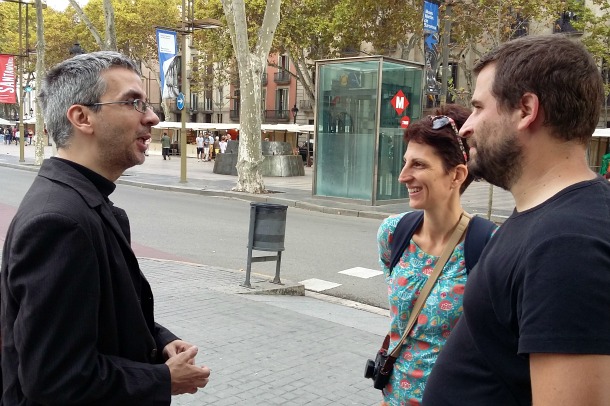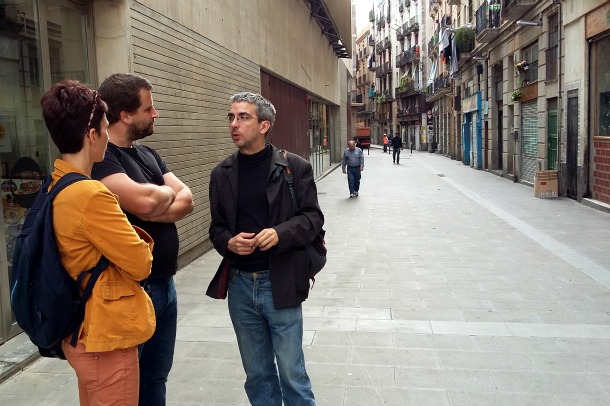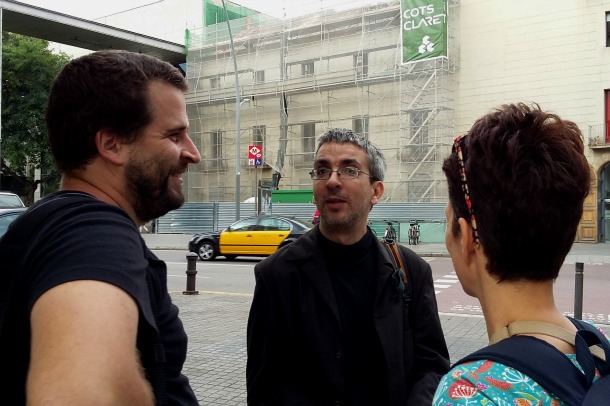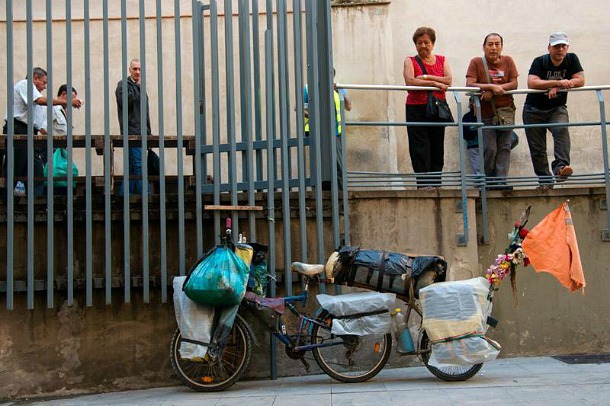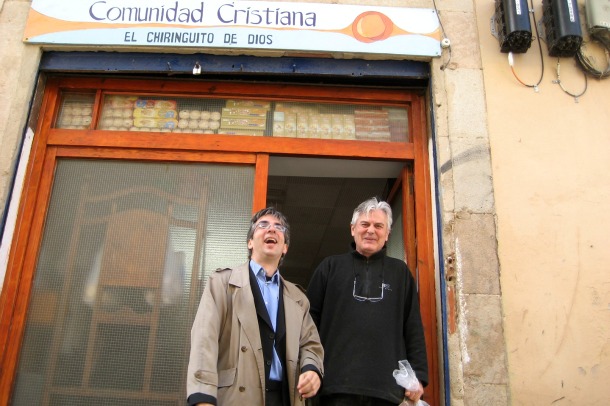José is an expert of Barcelona, he studied English at university, and now he is leading guided tours on the streets of the city. So what? – you might be wondering. We forgot to mention an important detail: he used to sleep on the same streets for weeks, where now he is talking about his past, and how he “got back to real life” – as he puts it several times during our tour.
Friday morning, 9:30, the meeting point is in front of the Liceu Theatre. La Rambla, the main touristic road of Barcelona is just waking up as we start the tour with our guide and a Hungarian couple, who helps homeless people in their country, and spending their holiday, they just wanted to have a look at the concept of Hidden City Tours.
We don’t need to go much further from the expensive restaurants and luxury hotels to see a sudden shift in the face of the city. All together there are around 6,000 homeless people in Barcelona, and the city can offer 2,000 places in shelters.
The ones who would like to have a life apart from being on the streets, sooner or later start looking for jobs. They get better clothes at the shelters for these occasions. It also happened to José that a social worker was paying for his trip, when he was going out of Barcelona for an interview.
We arrive to the library where homeless people can use computers. In most of the cases they are not looking for jobs, just watching music videos or playing games – to get away from reality for some hours.
“The interest in books and internet comes just after you have a roof over your head. If you are sleeping on the streets, you only worry about being fed, and where you will find a place to sleep for the night” – he adds.
Still staying in the El Raval neighbourhood, we visit locations that are essential parts of lives of homeless people: a place to have breakfast, a cloister with places to rest, and a park where they could spend time waiting during the day. Later, we arrive to a cash point where José spent some nights with other homeless people (one of them used to be a lawyer before, the other one an estate agent).
During walking, José’s personal story also unfolds. Born and raised in the Catalan capital, he worked as a translator for a number of publishing houses before losing his job. One year later, when his unemployment benefit and savings ran out, he found himself sleeping on the street.
“It was a difficult time, coping with my situation which quickly led to depression. I just wanted to disappear, and die on the streets, so that no one would notice that I’m gone.”
Then he decided to pull himself out of his unbearable situation, and started looking for jobs. After several failures, and years of doing temporary jobs, he met Lisa who was looking for guides for her newly started company. Now, José is working for her since March 2014.
“I’m still registered as a homeless. Otherwise I would lose all of my social benefits. We had an election a few weeks ago, I couldn’t vote” – he is telling about the remaining difficulties. “Not having rights is just one part. It was even worse to be on the street as if you were physically non-existing. People either looked over you or through you.”
Poor and rich living right next to each other is not a surprising fact in today’s society: a soup kitchen on one side of the road, a hotel on the other. Once, tourists had to wait for a long time for their bus to come. They looked around and saw the long queue waiting. “So disgusting! What are all these people doing here?” – one of the guys told with a pout on his face.
The place in fact is the biggest soup kitchen in Barcelona which is operated by nuns. They are providing three meals daily, distributing each time 200 portions of food, without asking for the papers or identification documents of people.
José also tells that in most of the cases soup kitchens and shower opportunities are at the different sides of the city, and as they are working with the same opening hours, you have to choose between the two of them.
There are always exceptions. A German man is running a kitchen with the help of homeless people who are volunteering in order to get the food prepared. A few houses next to the kitchen, they can also have a shower.
We arrive to the last stop of our Street Life Tour: the place that used to be the city wall of Barcelona, now hosts a social service for drug addicts. Before that, this area was full of needles lying on the streets; however they managed to keep the addicted people in safer circumstances.
As we have come to the end of the tour, let’s talk a bit about the beginning. Hidden City Tours started two years ago. Currently, they have five guides running the tours. It is a complex and unique social enterprise: on the one hand it introduces a new direction of alternative tourism, and makes people be more aware of the problems in their environment; on the other hand it offers jobs, and shows a way out to the previously homeless guides.
“Getting up every morning with a purpose, and coming to work as a guide has provided me with a much needed focus” – our tour guide, José writes in his introduction at the website of Hidden City Tours. “These are difficult, dark times for everyone right now in Spain, but I personally feel I am on the road to recovering my old self.”

